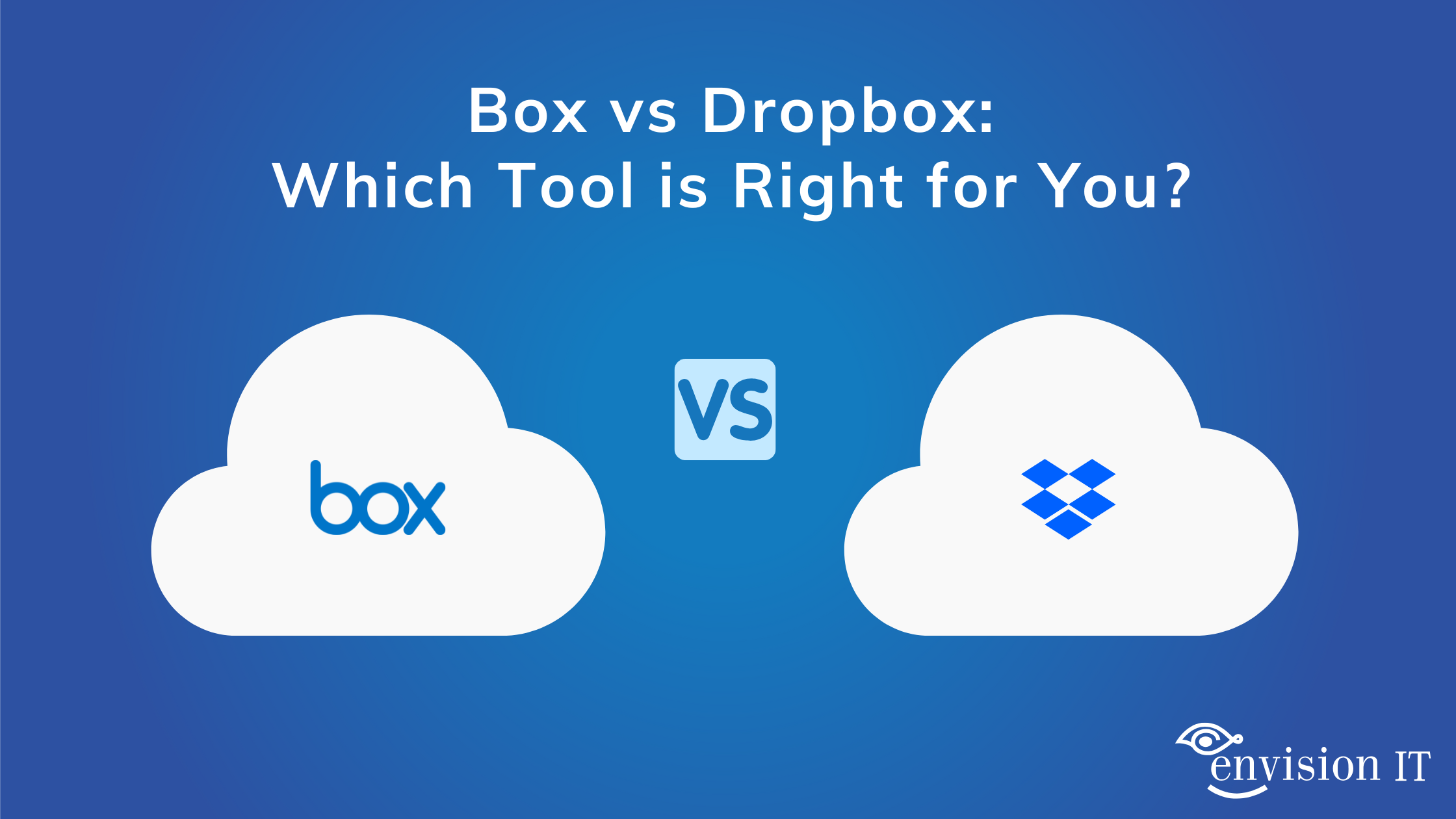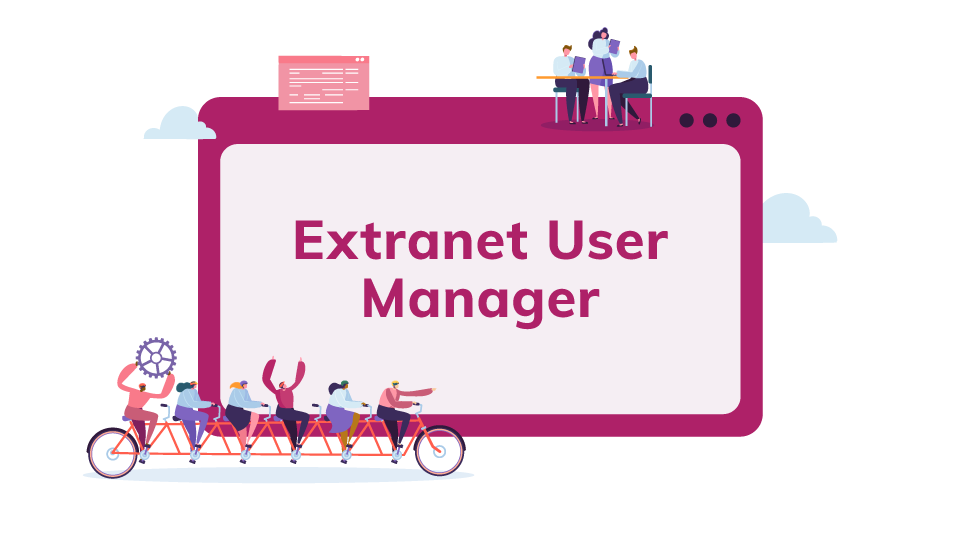Box vs. Dropbox: Which Collaboration Tool Fits Your Business Best?
The future of work is borderless, and so is your data. As organizations embrace hybrid and global teams, secure and hassle-free file sharing has become the foundation of faster collaboration. It’s no longer just about storing files; it's about creating a connected, compliant, and scalable environment where people can work together seamlessly. The question is: which platform will help you get there?
Among the many options available, two names consistently take the lead: Box and Dropbox. Both are trusted by millions, but they are built with different priorities in mind. One emphasizes simplicity and speed, the other structure and control. There is an implied trade-off here, but what if you didn't have to choose?
Which option is most suitable for your organization? In this guide, we'll explain the main differences between Box and Dropbox, highlight their strengths, and explore the best scenarios for each.
And if your team is already invested in Microsoft 365, there's another path worth considering. Solutions like Extranet User Manager can extend the familiar Microsoft ecosystem to external users, making collaboration simple while maintaining security and control. So, without further ado... let's dive in.

Overview of Box and Dropbox
Before we get into the 'nitty-gritty' of each platform, let's formally introduce them and compare the basics of Box and Dropbox.
Dropbox
Dropbox began as a basic file-syncing tool and has evolved into a well-known cloud-based platform for storing and sharing documents, allowing users to securely store, share, and access content from anywhere and with anyone.
Founded in 2007 by Drew Houston and Arash Ferdowsi, Dropbox has a clear mission: to develop more innovative, more efficient ways for people to collaborate. With a global user base of over 700 million, the platform seeks to simplify teamwork, allowing groups to share ideas and stay productive regardless of their location.
As one of the most recognized names in cloud storage and collaboration, Dropbox competes with services like OneDrive, Google Drive, and Box. Dropbox is known for its intuitive interface and seamless file syncing. It makes storing, sharing, and working on a file across devices easy. Contractors, freelancers, and small businesses often prefer it.
Box
Box started as a simple cloud storage service and has expanded into a leading enterprise content management and collaboration platform. It lets organizations securely store, manage, and share files from anywhere. It also provides advanced governance and compliance features for highly regulated industries.
Founded in 2005 by Aaron Levie and Dylan Smith, the company aimed to "power how the world works together." Now, it serves millions of users and thousands of businesses globally, establishing itself as a trusted partner for enterprises that need secure, scalable, and compliant collaboration.
Box distinguishes itself through its focus on enterprise security, workflow automation, and regulatory compliance. It has established itself as a trusted platform for businesses and enterprises seeking secure cloud storage solutions with scalable options.
Best Use Cases for Box and Dropbox
While they may sound the same, almost like the same product… the two platforms differ and offer benefits for different uses. Our analysis reveals that while both Box and Dropbox offer cloud-based storage and collaboration solutions, their strengths and target audiences are distinctly different.
Dropbox
Best for: Individuals, freelancers, and small businesses.
Why: Dropbox provides an intuitive interface, affordable prices, and seamless file syncing across devices. It's ideal for teams that prioritize simplicity and rapid collaboration, without requiring complex governance or compliance features. Creative professionals and small teams often choose Dropbox because of its ease of use and reliable performance with large files.
Box
Best for: large businesses, enterprises, and regulated industries.
Why: Box offers advanced security, detailed access controls, and compliance certifications like HIPAA, GDPR, and FedRAMP. Box provides enterprise features, including Box Shield for data loss prevention, KeySafe for managing encryption keys, and workflow automation. These features make it a reliable choice for organizations with strict rules and complex collaboration needs.

Feature-by-feature comparison of Box and Dropbox
Here is a side-by-side comparison of the features each provides:
| Key Feature | Dropbox | Box |
|---|---|---|
| Cloud storage and file sharing |
|
|
| Data management |
|
|
| Collaboration |
|
|
| Third-party integrations |
|
|
| User interface & Experience |
|
|
| Mobile and offline access |
|
|
The chart above shows that both providers offer similar functionalities. Dropbox targets individual users and small businesses. It focuses on ease of use and smooth file syncing. Box is designed for larger companies. It offers advanced collaboration tools and strong security features.
Box vs Dropbox: Security and compliance
Is Dropbox the same as Box when it comes to data protection, security, and compliance? They appear similar at a basic level, but Box offers additional features. Both Dropbox and Box offer:
- Data encryption for data at rest and in transit
- Two-factor authentication for accounts
- Audit logs to track activity
- Compliance with standards like ISO 27001 and SOC 2
- HIPAA readiness with the right agreements
Box and Dropbox both have strong security features, but it seems that Box offers more comprehensive security controls, such as:
- Encryption key control with Box KeySafe
- Broader compliance coverage
- Advanced security controls like IP restrictions and Box Shield for Data loss prevention (DLP)
- Governance tools for retention, legal holds, and automated lifestyle policies
Therefore, Box seems better suited for larger organizations or those with particular regulatory requirements. Dropbox, by contrast, may appeal to users and businesses seeking only basic security features.
Box vs Dropbox: Pricing Models and Plans Comparison
Money talks, so let’s discuss it. Below is the pricing model for Box and Dropbox, along with a value-for-money comparison.
Box Pricing Plans (2025)
| Plan | Price (annual) | Users | Storage | Key Features |
|---|---|---|---|---|
| Starter | $5/user/month | 3–10 | 100 GB total | Basic collaboration, limited external sharing, 2 GB file upload |
| Business | $15/user/month | 3+ | Unlimited | 5 GB file upload, basic admin tools, 1,500+ integrations |
| Business Plus | $25/user/month | 3+ | Unlimited | 15 GB file upload, unlimited external collaborators, advanced admin controls |
| Enterprise | ~$35/user/month | 3+ | Unlimited | 50 GB file upload, compliance tools, watermarking, legal holds |
| Enterprise Plus | ~$50+/user/month | 3+ | Unlimited | 150 GB file upload, Box Shield, Governance, KeySafe, AI features, premier support |
Dropbox Business Pricing Plans (2025)
| Plan | Price (Annual) | Users | Storage | Key Features |
|---|---|---|---|---|
| Standard | $15/user/month | 3+ | 5 TB shared | Office 365 integration, basic admin tools, 100 GB file transfer |
| Advanced | $24/user/month | 3+ | Starts at 15 TB | Advanced admin & security, device management, 100 GB file transfer |
| Enterprise | Custom pricing | 3+ | Unlimited (scales) | All Advanced features + enterprise support, network control, 250 GB file transfer |
Cost-Effectiveness Summary
In terms of "better value," it truly depends on the size of your team and your needs, but here is a quick breakdown of each:
Storage
- Dropbox Advanced: Offers scalable storage starting at 15 TB, marketed as “as much as you need,” but not truly unlimited.
- Box Business and above: Provides unlimited storage starting at the Business plan ($15/user/month), making it more cost-effective for teams with massive storage needs.
- Dropbox Standard: Capped at 5 TB, which may be limiting for large teams.
File Size Limits & Transfer
Dropbox Advanced: Supports 100 GB transfers via Dropbox Transfer; Enterprise supports 250 GB. Ideal for teams that frequently handle large files.
Box: Upload limits vary by tier:
- Business: 5 GB
- Business Plus: 15 GB
- Enterprise: 50 GB
- Enterprise Plus: 150 GB
Box does not have a dedicated transfer tool like Dropbox Transfer.
Pricing
- Dropbox Advanced: $24/user/month (annual billing), includes advanced admin, security, and collaboration tools without requiring add-ons.
- Box Business: $15/user/month, more affordable entry point with unlimited storage, but advanced features (governance, DLP, encryption key control) require Enterprise or add-ons.
Features
- Dropbox: Bundles advanced admin, security, and collaboration features into the Advanced plan, making it predictable and simple for mid-sized teams.
- Box: Offers granular control, enterprise-grade compliance, and governance tools. However, these often require Enterprise or Enterprise Plus tiers.
Bottom Line
- Dropbox: Best for teams seeking predictable pricing and straightforward external collaboration.
- Box: Best for organizations with strict compliance requirements, large-scale storage needs, and advanced governance/security.
Exploring Alternative Solutions
If your organization uses Microsoft 365, there’s a natural alternative to consider alongside Box and Dropbox: Extranet User Manager (EUM). Drawing from our experience and insights gained from Microsoft-centric teams, EUM provides a familiar, secure, and scalable solution for external collaboration. It offers enhanced security levels comparable to Box, leveraging Entra ID from an identity and authentication provider, while maintaining the user-friendliness of Dropbox. Additionally, it provides improved external user management with tighter integration within Microsoft 365.

What is Extranet User Manager?
Extranet User Manager (EUM) is a secure, Microsoft 365-integrated platform for structured external collaboration and document sharing. Whether you’re managing client portals, vendor access, or partner workspaces, EUM is designed to seamlessly integrate into your current environment without managing a second content cloud. Microsoft 365 is where all the work happens; make it so that your external collaborations can happen there as well.
The mission behind EUM is clear: make external collaboration simple, secure, and scalable for all users. Here's how it compares to Box and Dropbox:
- Delegated, scalable user management: Business owners can invite, manage, and remove external users themselves via an intuitive portal, supporting thousands of users and multiple portals.
- Enterprise‑grade security with Microsoft 365: Built on Microsoft Entra ID and SharePoint Online, EUM leverages your existing controls like Conditional Access, MFA, DLP, sensitivity labels, audit logs, and compliance capabilities (e.g., GDPR, HIPAA, SOC 2) all within your existing Microsoft 365 tenant.
- Seamless Microsoft 365 integration: External users can collaborate directly in Teams and SharePoint, co‑author in Word, Excel, and PowerPoint with versioning and workflows, eliminating the need for content migration.
- Frictionless user experience: Branded portals, clean navigation, mobile‑friendly design, and bring-your-own-identity reduce confusion and support tickets while increasing engagement.
- Support & scalability: Flexible licensing and a team deeply versed in Microsoft 365 help you scale confidently across departments and use cases.
Refer to the feature comparison table below for a detailed breakdown of how EUM compares to Box and Dropbox.

Extranet User Manager: Combining Ease of Use and Control + Tight Integration into Microsoft 365
A Microsoft 365–native virtual data room, such as the Extranet User Manager Data Room by Envision IT, extends your existing Microsoft 365 investment by transforming it into a secure, user‑friendly, centralized virtual data room.
And what is a virtual data room, you may ask? A virtual data room is a secure platform for storing, managing, and sharing confidential documents during business activities. It goes beyond just storing content; it provides governed access, auditable activity, robust security features, and collaboration tools designed for scrutiny by security teams, auditors, and regulators.
Because it’s built on Microsoft’s trusted infrastructure, it integrates directly with your current workflows, delivering simple, secure, and scalable external collaboration without introducing a separate content repository.
Why Choose a Microsoft 365 – Native VDR?
One platform vs. two EUM stores files in SharePoint/OneDrive, which means search, security, and compliance remain within Microsoft 365. Box integrates with Teams and OneDrive, but content resides in the Box Content Cloud, creating a separate governance layer for management.
Security & Identity
EUM uses Microsoft Entra ID External Identities, applying your existing Conditional Access, MFA, DLP, retention, and audit policies natively. Box supports SSO/MFA and offers Box Shield for classification and threat detection; however, these controls are managed within Box, not within your Microsoft tenant.
Collaboration Experience
EUM operates directly within Teams and SharePoint, facilitating co-authoring, version control, and workflows without duplication. Box’s Teams app is strong, but users still access and work in Box storage as a separate space.
External User Management
EUM provides delegated group ownership, branded portals, and self-service onboarding, reducing IT overhead and operational costs. Box centralizes control through its admin console, and although powerful, it is less flexible for business-led management.
Support & Scale
EUM supports thousands of external users across multiple portals, backed by a team specialized in Microsoft 365 environments.
Bottom Line
Suppose you’re already invested in Microsoft 365. In that case, Extranet User Manager enhances and extends that investment by combining simplicity with enterprise-level control, while unifying collaboration, security, and compliance into a single ecosystem. The outcome: seamless Microsoft 365 integration, reduced tool sprawl, easier governance, and higher user engagement.
EUM vs. Box vs. Dropbox
| Category | Extranet User Manager (EUM) | Box (Business Tier) | Dropbox Standard |
|---|---|---|---|
| Core Purpose | Structured external collaboration within Microsoft 365 | Enterprise content management and compliance | Simple cloud storage and secure file sharing |
| User Management | Delegated, scalable user management via portal; supports thousands | Centralized admin control; external users tracked in higher tiers | Basic user management; external sharing unrestricted |
| Storage | Leverages SharePoint Online for unlimited storage | Unlimited storage for Business Plus and Enterprise plans | 5 TB shared across the team |
| File Size Limits | Depends on SharePoint configuration | 5 GB file upload (Business) | 2 GB file transfer via Dropbox Transfer |
| External Collaboration | Structured access via SharePoint/Teams; branded portals | Limited on lower tiers; unlimited guests apply to Business Plus and above | Unrestricted external sharing via links or folder invites |
| Security & Compliance | Inherits Microsoft 365 compliance (GDPR, HIPAA, SOC 2); MFA, audit logs | Advanced compliance tools (Box Shield, Governance, KeySafe) | SOC 2, ISO 27001; HIPAA with BAA available on select plans |
| Integrations | Native Microsoft 365 integration (Teams, SharePoint, Entra ID) as well as integrations into LOB systems, including Salesforce, Dynamics 365, Hubspot, SAP, etc. | Integrates with 1,500+ apps, including Salesforce, Slack, and Okta | Integrates with Office 365, Slack, Zoom, and Trello |
| Ease of Use | Branded portal, mobile-friendly, self-service password resets, hands-off setup and configuration | Enterprise-grade UI and customizable branding | Clean, intuitive UI; minimal setup |
| Pricing Model | Licensed per portal or external user; flexible tiers based on portal/user and volume | Tiered per-user/month; add-ons for advanced features and it varies significantly by tier | $15/user/month (annual); 3-user minimum |
| Admin Controls | Delegated access, group-based permissions, and audit logs | Role-based admin delegation, granular permissions | Basic admin console, user and sharing controls |
| Scalability | Designed for high-volume external user access across multiple portals | Scales well across departments and enterprise teams | Scales easily for small teams; limited by shared storage |
| Branding & Customization | Fully branded portals and login experiences | Custom branding is available in higher tiers | Limited branding options |
| Support | Responsive support from Microsoft ecosystem experts | Premier support in the Enterprise Plus tier | Standard email and chat support |
.png)
Closing thoughts: Box, Dropbox, or EUM — Which one is best for you?
Choosing the right file sharing and document collaboration platform isn’t just about features; it’s about aligning with your organization’s priorities and your daily workflows. How do you work? What would make your team’s job easier? What would your clients appreciate? Here’s how the three options compare in a nutshell:
- Dropbox is recognized for its simplicity and ease of use. It is affordable for small to mid-sized teams because it offers ample storage and file transfer limits across all its plans. However, it does not provide the same level of compliance and control as Box or EUM.
- Box is a solid option for enterprises with strict compliance needs and complex workflows. It offers advanced security, robust administrative controls, and a range of third-party integrations. But many of its premium features are only available on higher-tier plans as additional add-ons.
- Extranet User Manager is ideal for organizations that already use Microsoft 365 and are seeking a structured, scalable solution for external collaboration. EUM provides delegated user management, branded portals, and enterprise-grade security by utilizing SharePoint and Microsoft Entra ID, eliminating the need for an additional management platform. This means you can say goodbye to confusion about access permissions and ensure your files remain secure.
Ready to simplify external collaboration without adding another platform?
Discover how Extranet User Manager transforms Microsoft 365 into a secure, scalable virtual data room.
Schedule a personalized demo today or learn more about EUM for Microsoft 365.